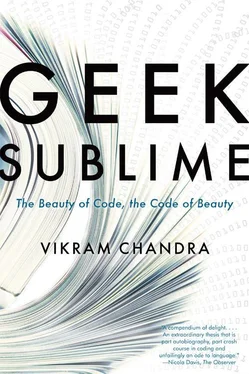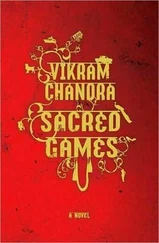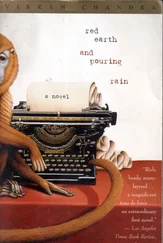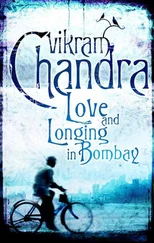the peculiar expressive power of Sanskrit [is] still vital and available … True, Sanskrit is now but one of several literary options. But it brings with it unique assets such as the direct verbal and thematic continuities that transcend local contexts and that, for that very reason, enable a powerful articulation of the regional in its true fullness … Interacting with these vernaculars, Sanskrit is itself continuously changing, stretching the boundaries of the sayable, thinking new thoughts, searching for ways to formulate this newness. 2
So on the eve of colonialism in the early eighteenth century, there was still a thriving — if diminished — cosmopolis. Sheldon Pollock writes:
The two centuries before European colonialism decisively established itself in the subcontinent around 1750 constitute one of the most innovative epochs of Sanskrit systematic thought (in language analysis, logic, hermeneutics, moral-legal philosophy, and the rest). Thinkers produced new formulations of old problems, in entirely new discursive idioms, in what were often new scholarly genres employing often a new historicist framework; some even called themselves (or, more often, their enemies) “the new” scholars ( navya ). 3
This ancient, widespread transmission was finally fractured by the establishment of English as the language of colonial politics and commerce, and the institutionalization of new dispensations of morality, knowledge, and power. The upper castes — especially the Brahmins — devoted themselves energetically to adapting to the new networks of wealth and meaning, to converting their social capital into economic capital. Many in the colonial legislative systems thought that Indian knowledge was flawed materially and morally, and that the only “cure” for the ills of the culture was the enforcement of change through European education. The early awe with which the eighteenth-century Orientalist scholars regarded Indian thought and art gave way, Vasudha Dalmia tells us:
to a marginalization of this knowledge and the degradation of the bearers of it to native informants. The Pandits had to deliver the raw material so to speak, the end products were to be finally manufactured by the superior techniques developed in Europe. In other words, their knowledge became valuable only once it had gone through the filter of European knowledge … The loss of authority … was not due to the intrinsic worth of either system, it was occasioned by the weightage awarded to Western scholarship by the political power it commanded. 4
Great works in the sciences and arts continued to be written well into the nineteenth century, but the Indian intellectual tradition was almost wholly removed from the educational system. 5After Independence, the new Indian state’s official policy of “technology-centric modernization” resulted in the entire native scholastic heritage being described “as ‘traditional’ in opposition to ‘modern’ and, therefore, understood as retrogressive and an obstruction in the path of progress and development which had been given a totally materialistic definition.” 6In my early childhood, I heard Sanskrit only in temples or at weddings; in both cases, Pandits chanted verses that the majority of us — children and adults — couldn’t understand. In sixth grade, I began to learn Sanskrit as a compulsory subject at school, and a vast, stifling boredom engulfed me immediately. It wasn’t just the endless rote learning of verb conjugations and vocabulary lists; Sanskrit came to us surrounded by a thick cloud of piety and supposed cultural virtue. Immediately after Independence, a passionate national debate took place over the institution of a national language for the Indian nation state. English was of course a foreign tongue, but southern speakers of Tamil and Malayalam objected to Hindi as the national language because it would put them at a disadvantage in the competition for jobs and advancement. In this context, the eternal language of the cosmopolis was presented as a good choice by some because it now was equally alien to everyone, because it was nobody’s “mother tongue”: “I offer you a language which is the grandest and the greatest,” said Naziruddin Ahmad during a debate in the Constituent Assembly, “and it is impartially difficult, equally difficult for all to learn.” 7
Others insisted that Sanskrit was a source of moral virtue, that its verses
breathe a high moral tone and display a precious note of what might be called High and Serious Enlightenment. Persons who are attuned to this spirit through an acquaintance from early childhood with verses of this type … have a balanced and cultured outlook upon life … The message of Sanskrit read or chanted is that of sursum corda , “lift up your hearts.” 8
Eventually, Hindi was installed as the national language, but Sanskrit was accorded official status by the Constitution and taught in school. Our Sanskrit lessons were replete with High and Serious Enlightenment; the characters in our readers were pompous prigs of every age and gender who went on and on about Right Action and Proper Behavior. The vast irony was that every Indian child of my generation and after has voraciously consumed the brightly colored pages of the Amar Chitra Katha comic books, which re-create “Immortal Picture Stories” from India’s vast storehouse of narrative. In these comics, much is taken from Sanskrit literature, and in them, muscled epic heroes behave badly, lop off limbs and heads, tangle with monsters, and go on quests; queens launch intricate intrigues; beautiful women and men fall in love and have sex; goddesses bless and create havoc; great sages spy on voluptuous apsaras and inadvertently “spill their seed” and thereby cause dynastic upheavals and great wars. In short, the beloved Amar Chitra Katha comics contain all the gore and romance dear to a twelve-year-old’s heart, but we could read them only in Hindi or Tamil or English, never in Sanskrit.
And of course nobody ever told us about Tantric Sanskrit, or Buddhist Sanskrit, or Jain Sanskrit. By the beginning of the second millennium CE, Sanskrit had “long ceased to be a Brahmanical preserve,” but it was always presented to us as the great language of the Vedas. 9Sanskrit — as it was taught in the classroom — smelled to me of hypocrisy, of religious obscurantism, of the khaki-knickered obsessions of the Hindu far-Right, and worst, of an oppression that went back thousands of years. As far as I knew, in all its centuries, Sanskrit had been a language available only to the “twice-born” of the caste system, and was therefore an inescapable aspect of orthodoxy. At twelve, I had disappointed my grandparents by refusing to undergo the ritual of upanayana , the ceremonial investiture of the sacred string which would signal my second birth into official Brahmin manhood. This was not out of some thought-out ethical position, but from an instinctive repulsion at the sheer, blatant unfairness of a ceremony and a system predicated on the randomness of birth. Now Sanskrit was being forced on me, with all its attendant casteism, its outdated and hidebound and chant-y ponderousness. As soon as I was offered a choice — a chance to learn another contemporary language to fulfil requirements — I fled from Sanskrit and never looked back, until I had to ask, for the premodern poet in my novel: What makes a poem beautiful?

The poet Kshemendra — Abhinavagupta’s student — left this advice:
A poet should learn with his eyes
the forms of leaves
he should know how to make
people laugh when they are together
he should get to see
what they are really like
he should know about oceans and mountains
Читать дальше













